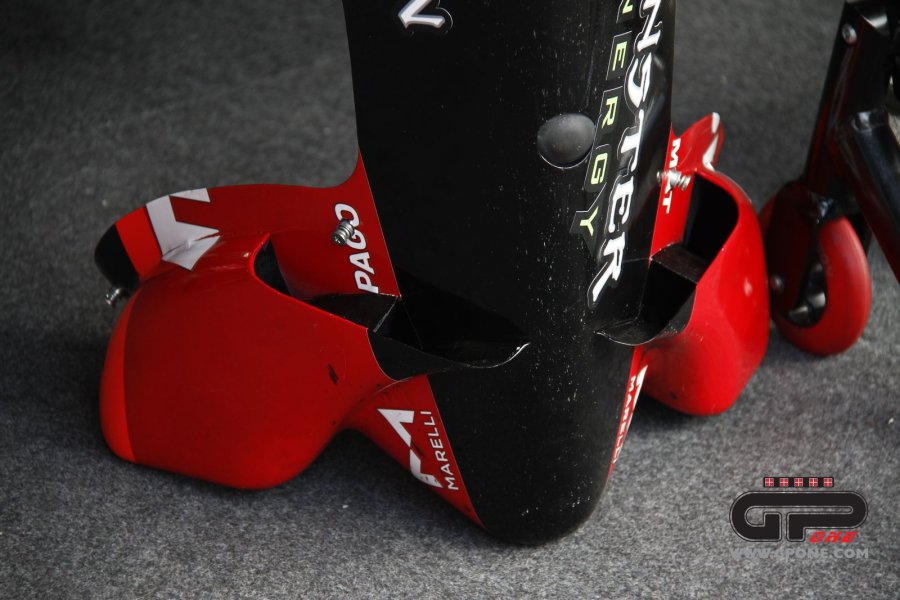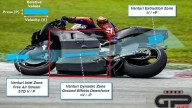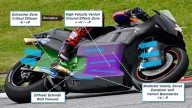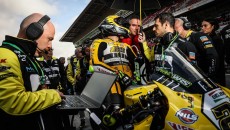Side skirts, as an aerodynamic element, were introduced for the first time in Formula 1 by Lotus in the World Championship in 1977, on the single-seater Lotus 78, the first total ground effect car, putting Bernoulli's principle into practice.
British technicians designed side pods with an inverted wing surface bottom: this expedient allowed considerable downforce to be obtained. To make the bottom of the car work better on the ground, 'skirts' were used which served to seal the asphalt surface more effectively with the wing bottom of the single seater, clearly separating the air flows between the underbody and the outside of the car and thus increasing the Venturi Effect.
Now we know that in motorcycle racing this is impossible, at this level, even if in the past someone tried (even Franco Uncini, with Suzuki, thanks to technician Masrio Ciamberlini, after an experiment by privateer Corrado Tuzii). The reason is simple: the bike is a pendulum that swings from right to left and only for a few moments does the belly of the fairing touch the ground. Furthermore, until yesterday we looked at the aerodynamics of the fairing only with one eye on resistance to forward motion, trying to reduce the Cx and Cz as much as possible.
For some years, however, MotoGP has been searching for the philosopher's stone, which, as legend has it, was capable of turning lead into gold. The concept is simple: even in those few moments in which the rider and bike are close to the ground, a few thousandths of a second can be stolen thanks to better grip.
So here are the Ducati 'ears' in the lower part of the fairing, which blow the air underneath avoiding (perhaps) a little lift, or the strange chest shape of the Aprilia fairing, immediately copied by Honda and Ducati.
In the graphics designed by our Highslideshow reader an interpretation of the work of the flows on the fairing of Aleix Espargaro's Aprilia on the Sepang track.
Instead, the diffuser (or 'ears') on the Desmosedici GP23 seems to be a different matter: in this case, as can be seen from the photo, the blowing seems to serve to avoid the lift of the air under the belly of the fairing.














